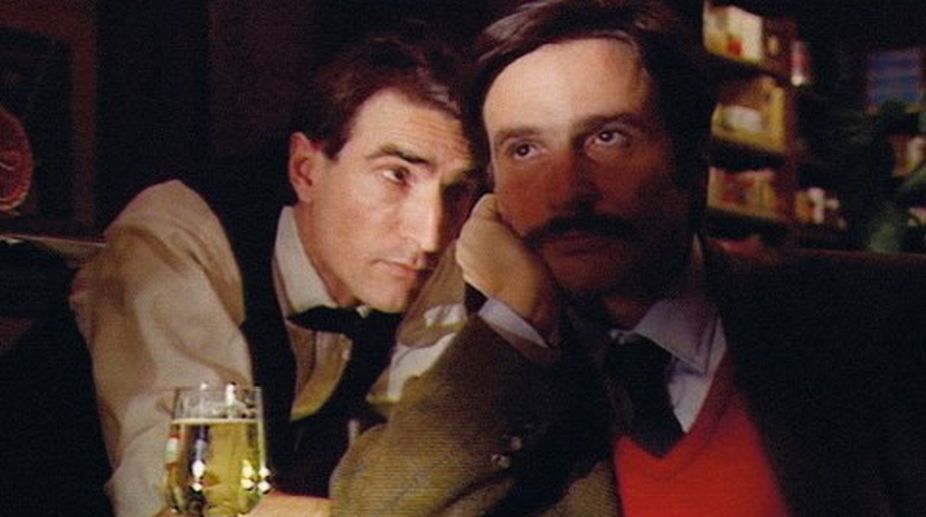Quite apart from the ritual colours splashed at the inauguration of the 23rd Kolkata Film Festival, it is clear that enough thinking has gone into offering a scintillating cocktail prepared well enough to recreate the old excitement. At one level, it could be seen as another carnival that brings thousands to the Nandan campus.
But what has enabled the festival to grow in stature and academic appeal is the effort to bring as much of the classical and contemporary interest to a city that has traditionally been committed to exploring the world of cinema. The gradual decline of the film society movement had created a vacuum that needed to be filled.
The festivals organised by the Directorate of Film Festivals in Delhi had brought the event to Kolkata after long gaps. That was not good enough. But the question was whether the Kolkata event could acquire a character of its own in a global climate dominated by big festivals in Cannes, Venice and Berlin with many more like Toronto and even Busan in Asia claiming the best films of the year in its competitions.
Advertisement
Kolkata also has to compete with similar events in Goa, Thiruvananthapuram, Pune and now Bangalore that has larger budgets and can draw a sizable number of international delegates. By comparison, it may be seen to be more modest although no effort has been spared to make it more visible to the masses than ever before. From stars who arrive at the Netaji Indoor Stadium to boisterous cheers from the galleries to the gigantic billboards installed at the festival hub and other parts of Kolkata, it has been turned into a celebration that extends well beyond the investigation of new styles and statements on the screen.
For students and young enthusiasts, who are seen in large numbers, the renewal of a commitment to the medium while looking for career opportunities is obvious. More and more debutants are making use of the digital medium to give expression to new ideas.
For them the festival presents a bank of ideas that could be adapted to their social and cultural environment. At the same time, there are confirmed cineastes who have perhaps been doing their best to remain updated through the Internet. For them there are discoveries to be made in more sections that have been put together this year.
Some of these are traditional ones like the retrospective of the works of Michael Winterbottom. He had shot into prominence on the festival circuit with Welcome to Sarajevo and The Road to Guantanamo — both dealing with contemporary tensions. But what should find a curious audience in Kolkata is Trishna, which Winterbottom had made in India with a rural landscape in Rajasthan as its setting. Again he puts forth the controversy of a natural environment being transformed by industrial growth.
The UK-Sweden-India coproduction is a loose adaptation of Hardy’s Tess of the d’Ubervilleswith Freida Pinto in the central role of the Indian girl who falls in love with a British Indian industrialist but who is not reconciled to the social transformation. It should stir minds as much as last year’s I, Daniel Blake directed by Ken Loach who has inspired Winter bottom in many ways.
What has kept the festival alive is the effort to move beyond the traditional areas into innovative packages. While Goa may be offering the Panorama of new Indian films with its variations in other states, Kolkata has launched a competition in Indian language films with a cash prize that should draw the new class of independent directors.
The titles competing for recognition this year don’t have established names. Instead there is a much awaited splurge of new ideas in films like Sound of Silence (an Indo-US co-production), Sand Paper, Tikli and Laxmi Bomb and Pupa (from Bengal). Similarly tempting is the package of Indian national award winning films like Dashakriya(Marathi), Wrongside Raju (Gujarati), Maj Rati Ketaki(Assamese) and K Sera Sera (Konkani).
It more than compensates for the absence of the Indian Panorama. All this suggests the skill with which the festival has smoothly glided past the obvious limitations of competing with similar events elsewhere.
The competition of women directors from Asia has been converted into an international competition with entries from Brazil (Sort of Family), Italy (Stories of Love that cannot Belong to this World), Bangladesh (Death of a Poet), Kupal (Iran) and Nocturnal Ties (India). The results will be watched with interest especially because the success of a festival lies not just in prominent acquisitions from other festivals but also in pleasant discoveries.
Godard features conspicuously in this category through a film that was made in 1986 for French Television, The Rise and Fall of a Small Film Company, as well as in Redoubtable that shows him shooting La Chinoise in 1967 with Anne Wiazemsky, the woman he loved. Godard is a perpetual source of curiosity for film lovers in Kolkata.
But there are other old-timers like Marta Meszaros and Zoltan Fabri (both with films that have not been seen yet) as well as Rodin, Rajen Tarafdar and Nabyendu Ghosh who will figure in the special and centenary tributes.
The splendid convergence of excellence may well be partly drowned in the excess. But that is an experience that is well worth the risk.
Advertisement











